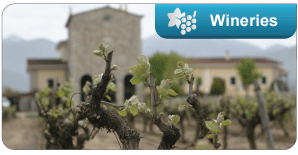The Roman period
As of the middle of the 2nd century BC, during the Roman period (146 BC-324 AD) Greece was under Roman rule. On encountering Greek culture, the Romans would adopt many a Greek cultural elements out of which the “Graeco-Roman” civilization would emerge. Among those cultural elements were winegrowing and winemaking techniques which constituted the origins of Roman wines. Those techniques were not unknown to the Romans who had first encountered them in the Greek colonies of Sicily and southern Italy. Up to the time that they came to Greece, the Romans had cultivated their vineyards in what is known as the “tendone” system, a technique of the Etruscans who would train the vines to climb on trees and then branch out into cordons. After acquainting themselves with Greek winegrowing techniques, the Romans adopted the Greek vine training system which called for short, bush-trained upright spurs and yielded fewer but better grapes, especially in hot and dry climates. Being ardent admirers of the good life, the affluent Romans easily became attached to the Greek tradition of symposia and the art of enjoying wine. Under Roman contol of the wine trade, the fine wines of Greece were again in demand and much sought after.
Eminent Roman poets and distinguished writers of the time would sing the praises of Greek wines in their work. Among them, Horace lauded Homer and his epics by referring to him as Homerus vinosus. Virgil praised the hundreds of Greek grape varieties, observing that it is harder count them than "he grains of sand" on the seashore. Pliny went further by giving detailed descriptions of Greek wines. It was during that time, that Athenaeus’ “Deipnosophistae” was written, which constitutes an unsurpassed guidebook on gastronomy and Greek wine tasting. Two important Greek doctors, Dioskourides and, later, Galenos, following in the footsteps of Hippocrates, pointed towards the value wine had as a therapeutic means and favorably commented on the plethora of Greek wines as well as on the wine’s exceptional quality.
During the Roman period, Crete made a dynamic comeback among important wine production hubs. From the 1st to the 3rd century AD, during the golden age of the Cretan vineyard, Crete would export its wines not only throughout the Aegean but also to Egypt, continental Greece, and all of Europe: that is corroborated by the Cretan amphorae found in Pompeii and Ostia in Italy, in Lyons, France, and even in Switzerland. During that same time period, vine stock grafts were part of the brisk wine commerce activities, traveling from Greece to mainly western destinations. In the second half of the 1st century BC Cretan wine captivated Rome.


